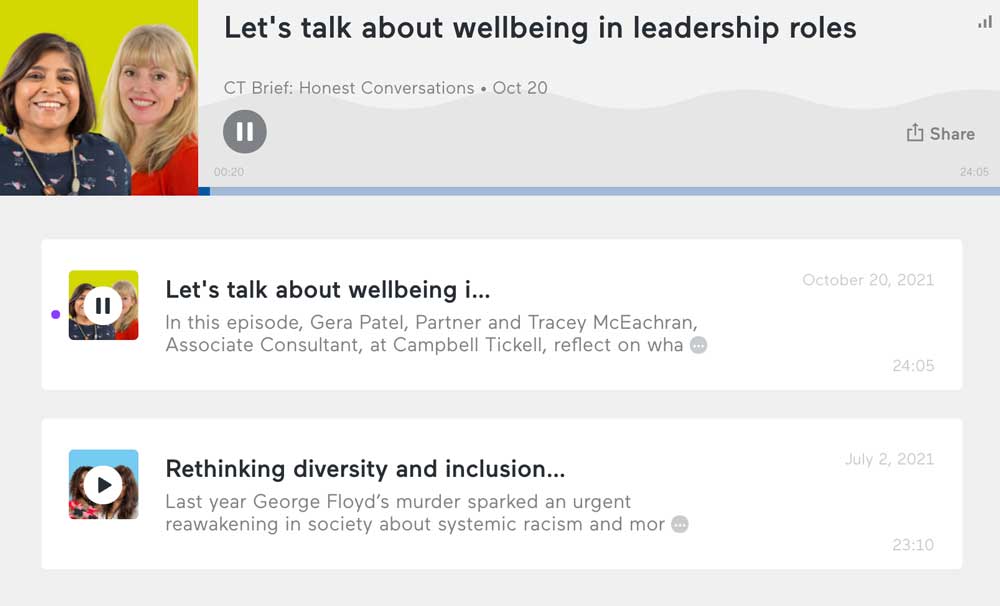Steering the ship
Board leadership in the aftermath of the COVID-19 crisis should focus on three key elements: purpose, behaviour and culture

GOVERNANCE
Image: Istock
Radojka Miljevic
Partner, Campbell Tickell


Ceri Victory-Rowe
Director, Campbell Tickell
As cautious relief – that the worst of the pandemic may be over – combines with fatigue and the effort needed for recovery, it is wise for boards to think carefully about how to lead well. Every interaction with senior staff, as well as with the wider workforce and volunteers, contributes to the cultural tone of the organisation; perhaps this has never mattered more than in today’s charities. But how should boards adjust their strategic leadership? A good starting point is to learn lessons from the crisis we have all collectively endured.
Recovery
Fatigue is a word we have heard a lot across our client base in the past six months – experienced in lots of different ways by people in a broad spectrum of roles, as well as in their personal lives. We all continue to live in a state of existential uncertainty, wondering when we can stop worrying about the pandemic and make plans for our lives. In many charities, staff and volunteers have worked extraordinarily hard to keep critical services going, as well as dealing with the combined mental strain of reduced face-to-face contact and lots of online meetings, not to mention keeping their own domestic show on the road.
So if you’re tired and missing a little bit of the zip and zest for work, it’s probably normal. ‘Not normal is normal’, as some have said. And it’s not in fact uncommon, of course, after a period of intensity – greater challenge, intense work, a focused call to action – to feel some deflation. Although the immediate crisis may be over, it is clear that it will take most people – and organisations – some considerable time to fully recover from its effects. Boards underestimate this at their peril.
“Although the immediate crisis may be over, it is clear that it will take most people – and organisations – some considerable time to fully recover from its effects. Boards underestimate this at their peril.”
Purpose
One of the unforeseen consequences of the pandemic was how galvanising it was for teams to coalesce around organisational purpose. This allowed the stripping back of the normal array of requirements and obligations. Silos and competing team priorities melted away in the pursuit of the bigger mission for working together – and in fact many boards tell us they experienced some of the same helpful distillation of purpose in their own work.
Boards and chief executives tell us proudly of how their staff teams performed during the pandemic, how energised people seemed by tackling a ‘crisis’, and how productivity went up (even if it may now be reducing as a result of fatigue). We should learn from this that simplicity of purpose, collaboration and shared goals – as well as taking more interest in each other as people managing other lives outside work – make staff and volunteers at all levels of a charity feel connected and enthused.
This is an important lesson for boards as a key part of their role is to ‘hold’ the purpose of a charity and how this is translated into strategic priorities. There is a risk that trying to somehow catch up after the past 18 months of disruption, combined with pressure to resume normal service, will feel overwhelming for chief executives and their teams; suddenly some strategies agreed before the pandemic don’t feel very helpful as a blueprint for moving forward.
The board’s role in prioritising and setting a clear course ahead may now be more important than ever. The independence of the board from the day-to-day operational delivery allows it to map a path through the aftermath of crisis, which engages and motivates staff and reduces the risk of fatigue and burnout.
Behaviour
It is also important that boards understand how to be in active listening mode and ensure this approach is mirrored in the wider organisation.
We know that this current time is a challenging one for employers, with the recruitment market moving quickly, high demand for specialist skills and knowledge, and employees perhaps having a different sense of their agency.
How we treat people, how they are retained, valued and developed, has become a more urgent priority in some organisations, and it is important that boards are not remote from this dynamic and really are listening and responding to the messages from their senior staff.
In this context, while providing strategic challenge and support to senior staff is an important aspect of the board’s strategic leadership, it is important to recognise that this isn’t a fixed compound.
Each board is not expected to provide an equal amount both of challenge and support to senior staff in the organisation, as though it were adding sugar and salt to a bread mix. These elements are relational, and boards have choices about how they vary the mix along a spectrum of challenge and support, and in response to circumstances.
For example, with a new or relatively inexperienced chief executive, a board may make a conscious choice to put the focus on support and on coaching performance in the first year, rather than pressing hard on how all of the strategic objectives have been progressed.
In the aftermath of the pandemic’s immediate crisis, and given the competing pressures senior staff may feel under and the widespread fatigue we know is being experienced, we suggest that boards need to think carefully about that balance – and about the areas where their support and challenge will have most impact.

“Boards have the opportunity to set the cultural tone of the organisation: what matters most in this charity, how we treat people, and how we tackle opportunities and challenges.”
Culture
This does not mean, of course, that boards should withdraw from constructive challenge. But once again, this is a matter of being clear-sighted about priorities. And by carefully considering the issues on which they engage with senior staff, and the way they go about doing so, boards have the opportunity to set the cultural tone of the organisation: what matters most in this charity, how we treat people, and how we tackle opportunities and challenges.
The board’s role in relation to organisational culture is increasingly prominent in contemporary thinking about good governance. Culture defines the experience of staff, volunteers and beneficiaries, and may make or break a charity’s reputation. We live in an era when organisations have developed a new appreciation for how much the mental health and wellbeing of their people matters, and of the value of inclusivity and of openness to change.
In this context, a board which presents a caring culture orientated around clear strategic priorities and expectations, and which understands when and in what measure to listen to, challenge and support senior staff, will be on track to demonstrate the calibre of strategic leadership needed over the months and years ahead.
This article was first published on ACEVO'S Blog.


